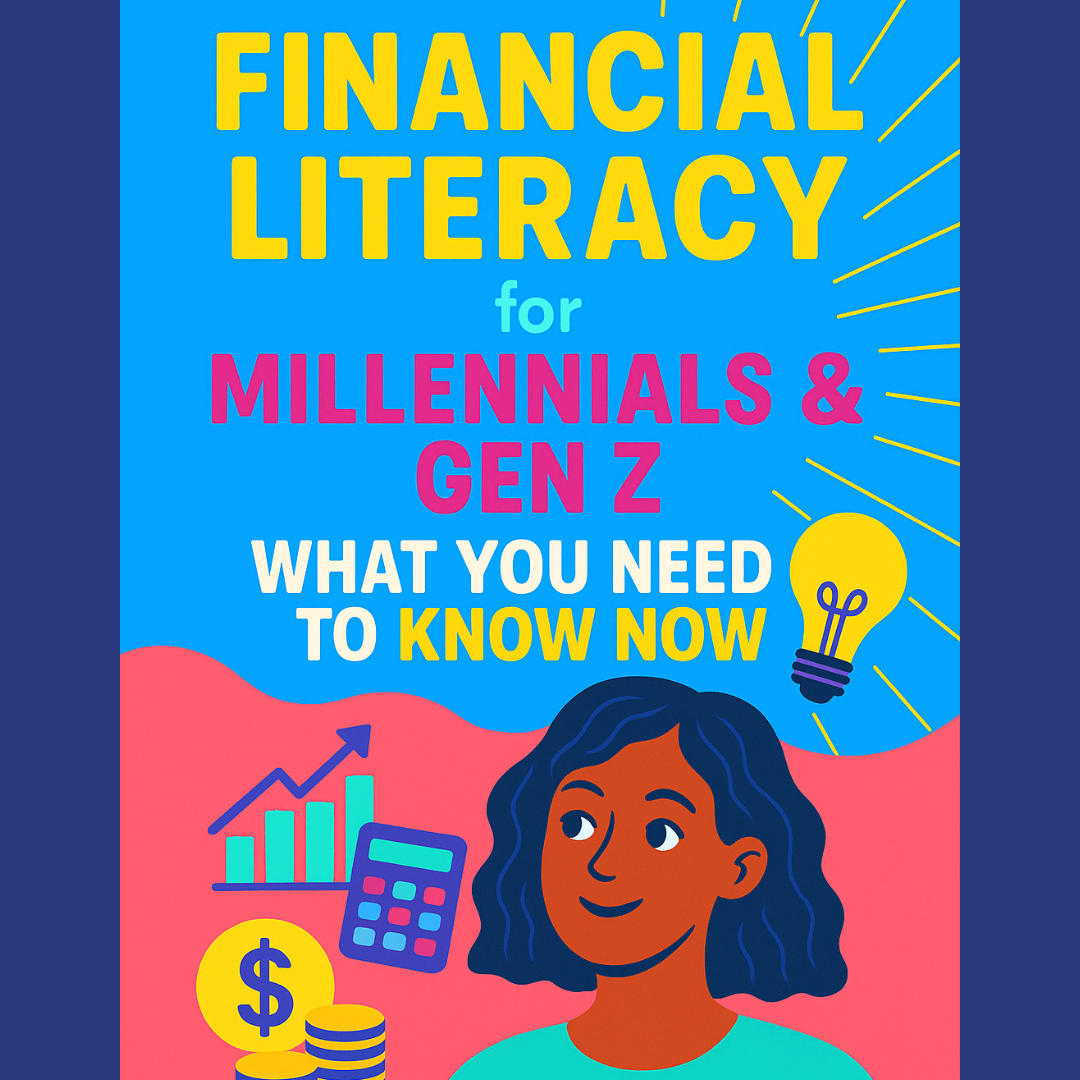In a world where financial stress is one of the leading causes of anxiety, mastering the basics of money management isn’t just a luxury—it’s a necessity. Financial literacy is the foundation of every smart financial decision you’ll make in your lifetime. Whether you’re a college student, young professional, entrepreneur, or preparing for retirement, understanding the essential pillars of financial literacy can empower you to control your future, build wealth, and live with peace of mind. This beginner’s guide breaks down the five key pillars of financial literacy: earning, saving, investing, spending, and protecting. Let’s dive into each one and discover how mastering these concepts can transform your finances and your life.
Pillar 1: Earning – The Starting Point of Every Financial Plan
The first step to building a strong financial future is learning how to earn—and how to maximize what you earn. Earning isn’t limited to having a full-time job. It also includes freelance gigs, side hustles, passive income, investments, royalties, and digital businesses. In today’s digital economy, opportunities to earn are more abundant than ever. Yet, many people earn money without truly understanding how to scale or manage their income. That’s where financial literacy begins.
Understanding your income structure, whether it’s hourly, salaried, commission-based, or project-driven, is essential. Financially literate individuals know how to negotiate their pay, increase their value in the marketplace through continuous learning, and leverage skills to create additional revenue streams. The goal is not just to work for money, but to make money work for you over time. When you’re intentional about how you earn, you lay the groundwork for long-term success.
Pillar 2: Saving – The Foundation of Financial Security
Once you earn money, the next step is to make sure you keep it—and that’s where saving comes in. Saving is more than just stashing cash in a bank account. It’s a disciplined practice that prepares you for emergencies, future goals, and financial independence. Too many people live paycheck to paycheck, not because they don’t earn enough, but because they don’t have a plan for saving what they do earn.
A financially literate person saves strategically. This includes building an emergency fund with three to six months’ worth of expenses, creating short-term savings for planned purchases, and contributing consistently to long-term goals like retirement or homeownership. In 2025, technology has made saving easier with automated savings apps, round-up tools, and high-yield savings accounts. Still, the mindset behind saving remains the same: pay yourself first. Set aside a fixed percentage of your income before you spend anything. The habit of saving—even small amounts—will provide financial stability and peace of mind for years to come.
Pillar 3: Investing – Growing Your Wealth Over Time
Saving protects your money, but investing grows it. Once you have a financial cushion in place, the next level of literacy is understanding how to invest. Investing involves putting your money to work in vehicles like stocks, mutual funds, ETFs, bonds, real estate, or even a business, with the goal of earning a return over time.
Many people are intimidated by investing because it seems complex or risky. But the truth is, the biggest risk is not investing at all. Without investing, your money loses value due to inflation. With the power of compound interest, even small investments made early can grow into substantial wealth. You don’t need to be an expert or have thousands of dollars to start. In 2025, apps and platforms like Acorns, Robinhood, and Wealthfront will allow beginners to invest with as little as $5 and receive automated, diversified portfolios based on their risk tolerance and goals.
The key is consistency. Set your goals, understand the time horizon, and avoid emotional reactions to market changes. Educating yourself about basic investment principles—like diversification, asset allocation, and long-term growth—will empower you to build generational wealth with confidence.
Pillar 4: Spending – Aligning Your Money with Your Values
Spending is often where even the highest earners struggle. That’s why it’s crucial to develop spending habits that align with your values and long-term vision. Financially literate individuals understand that every dollar they spend has a purpose. They don’t just track their spending—they manage it with intention.
Creating and sticking to a budget is the starting point for healthy spending. A budget isn’t a punishment—it’s a tool for empowerment. It gives you the clarity to see where your money goes and helps you make room for what truly matters. In today’s world of one-click purchases and subscription overload, budgeting tools like YNAB, EveryDollar, and Mint are more important than ever. They help you categorize your spending, identify waste, and stay accountable.
Being mindful of your spending means learning the difference between needs and wants, practicing delayed gratification, and resisting the pull of lifestyle inflation. You don’t need to sacrifice joy or comfort to be financially smart. In fact, conscious spending frees you from financial stress and allows you to enjoy your money in meaningful ways. When you spend intentionally, you’re not just buying things—you’re buying time, freedom, and peace of mind.
Pillar 5: Protecting – Safeguarding Your Financial Future
You’ve earned, saved, invested, and spent wisely—now it’s time to protect everything you’ve built. Financial protection is often overlooked, but it’s a vital part of long-term security. Without the right safeguards in place, a single unexpected event—like a medical emergency, job loss, accident, or cyberattack—can wipe out years of progress.
Protection starts with insurance. Health insurance covers medical costs. Life insurance supports your loved ones if something happens to you. Disability insurance replaces your income if you’re unable to work. Homeowners’ or renters’ insurance protects your assets. If you run a business, liability and commercial insurance are non-negotiable. Don’t forget about identity theft and cyber protection, especially in an increasingly digital world.
In addition to insurance, estate planning is an important component of protection. Everyone, regardless of age or wealth, should have a will, a power of attorney, and a healthcare directive. These documents ensure your assets are handled according to your wishes and that your loved ones aren’t left in chaos during a crisis. Protecting your finances is about being proactive, not reactive. It gives you peace of mind and ensures that your hard-earned progress isn’t left vulnerable to the unexpected.
Putting It All Together – Your Roadmap to Financial Mastery
Mastering the five pillars of financial literacy isn’t something that happens overnight. It’s a journey that unfolds with every decision you make. But the good news is that anyone, at any stage of life, can start building their financial knowledge and confidence today. These pillars—earning, saving, investing, spending, and protecting—are interdependent. Each one reinforces the others. For example, earning more money won’t help if you don’t know how to save or invest it. Likewise, saving money won’t secure your future if it isn’t protected.
If you’re just beginning your financial journey, start with the area that needs the most attention. Are you overspending and struggling to save? Focus on budgeting. Are you unsure how to invest? Begin learning about index funds and risk tolerance. Take action, one step at a time. Read books, listen to podcasts, take a free finance course, or talk to a certified financial advisor. Use tools and apps that simplify the process. The more you engage, the more confident you’ll become.
In a rapidly changing financial world, being literate is your greatest asset. It’s how you stop living paycheck to paycheck. It’s how you build wealth, break generational cycles, and create options for your future. The more you learn, the more you earn—and the more freedom you gain. Let this be your moment to take control of your money, your mindset, and your future. Master the five pillars of financial literacy, and you won’t just survive—you’ll thrive.





